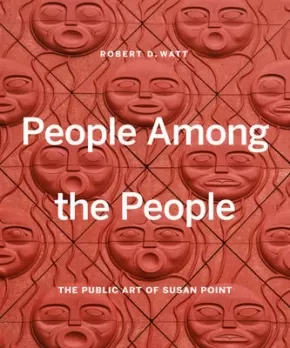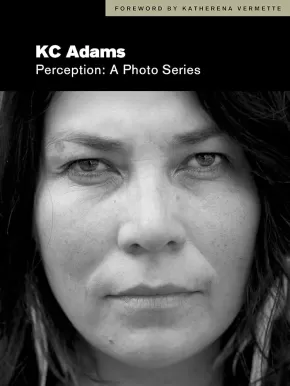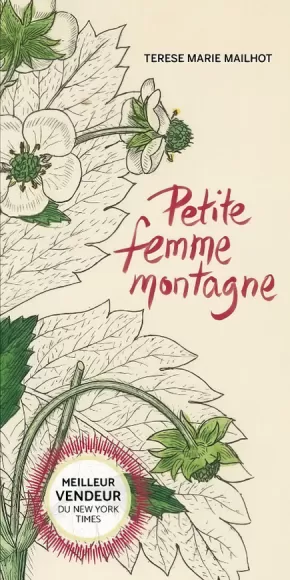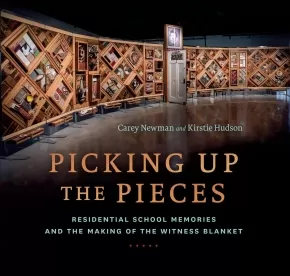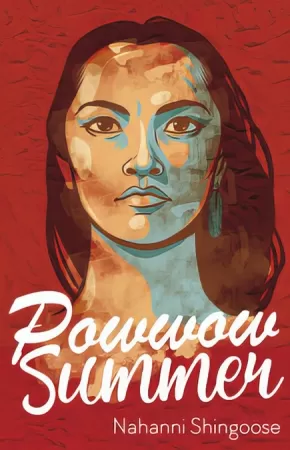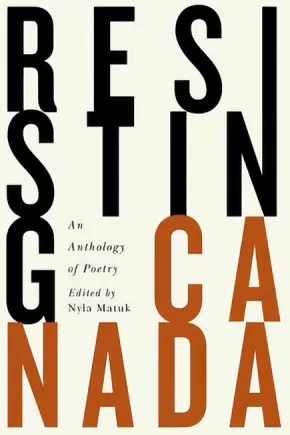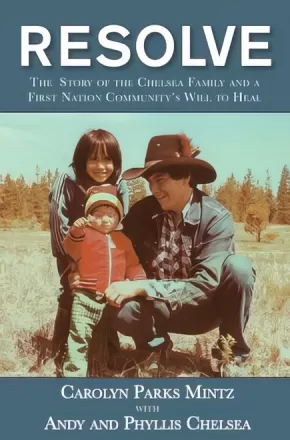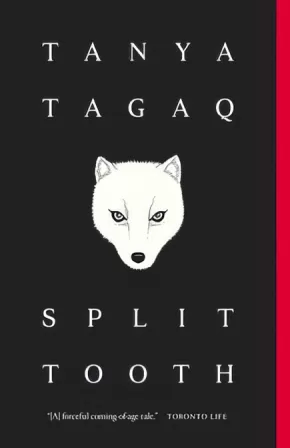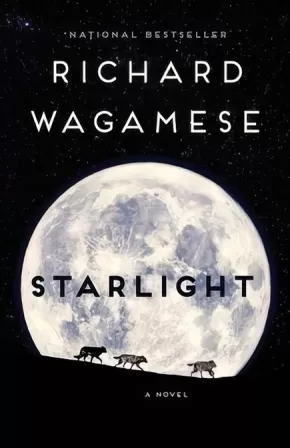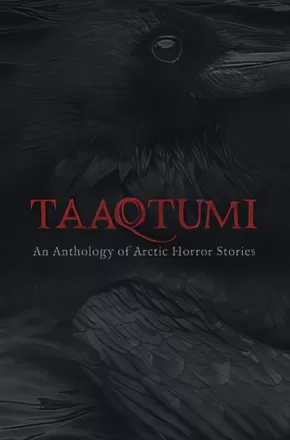
Indigenous Peoples in Canada
541
-
555
of
883 Results;
Sort By
Go To
of 59
People Among the People: The Public Art of Susan Point
$60.00
Artists:
Format:
Hardcover
Text Content Territories:
Indigenous Canadian; First Nations; Salish; Coast Salish; Musqueam;
ISBN / Barcode: 9781773270425
Synopsis:
Synopsis:
“I feel that it is important to re-establish our Salish footprint upon our lands, to create a visual expression of the link between the past and present that is both accessible and people-friendly. . . . I create unique, ‘original’ artwork that honours both my people and the diverse group of peoples from around the world who have come to live upon our lands on the Northwest Coast. My hope is that my art leaves a lasting impression on visitors, locals, and the surrounding communities.” — Susan Point
This beautifully designed book is the first to explore Susan Point's publicly commissioned artworks from coast to coast.
Susan Point’s unique artworks have been credited with almost single-handedly reviving the traditional Coast Salish art style. Once nearly lost to the effects of colonization, the crescents, wedges, and human and animal forms characteristic of the art of First Nations peoples living around the Salish Sea can now be seen around the world, reinvigorated with modern materials and techniques, in her serigraphs and public art installations—and in the works of a new generation of artists that she’s inspired.
People Among the People beautifully displays the breadth of Susan Point’s public art, from cast-iron manhole covers to massive carved cedar spindle whorls, installed in locations from Vancouver to Zurich. Through extensive interviews and access to her archives, Robert D. Watt tells the story of each piece, whether it’s the evolution from sketch to carving to casting, or the significance of the images and symbolism, which is informed by surviving traditional Salish works Point has studied and the Oral Traditions of her Musqueam family and elders.
In her long quest to re-establish a Coast Salish footprint in Southwest British Columbia and the Pacific Northwest of the US, Point has received many honours, including the Order of Canada and the Audain Lifetime Achievement Award. This gorgeous and illuminating book makes it clear they are all richly deserved.
Additional Information
208 pages | 10.17" x 12.39" | Colour photographs throughout | Hardcover
Perception: A Photo Series
$34.00
Artists:
Format:
Hardcover
Text Content Territories:
Indigenous Canadian; First Nations; Inuit; Métis;
ISBN / Barcode: 9781553797869
Synopsis:
Synopsis:
Social action art in book form, Perception: A Photo Series encourages readers to look and then look again.
Tired of reading negative and disparaging remarks directed at Indigenous people of Winnipeg in the press and social media, artist KC Adams created a photo series that presented another perspective. Called “Perception Photo Series,” it confronted common stereotypes of First Nation, Inuit and Métis people to illustrate a more contemporary truthful story.
First appearing on billboards, in storefronts, in bus shelters, and projected onto Winnipeg’s downtown buildings, Adam’s stunning photographs now appear in her new book, Perception: A Photo Series. Meant to challenge the culture of apathy and willful ignorance about Indigenous issues, Adams hopes to unite readers in the fight against prejudice of all kinds.
Reviews
"Indeed, the potential lasting impact of this collection can’t be underestimated; this is socially engaged art at its best." — Kirkus Reviews, March 2019
"KC Adams' Perception series challenges us to bridge thought and reality; emerging on the other side better having challenged ourselves to see Indigenous peoples for what they really are. We are grandparents, parents, children - and everything in between. As Adams shows through this incredible exhibition of faces and feelings, we are beautiful, whole, and complex peoples irreducible to stereotypes and slander." — Romeo Saganash (Cree, father, activist, and dreamer)
"KC Adams's Perception series absolutely captured the most devastating perceptions from the colonial mind, and the accompanying lack of knowledge about the truth of Canada's historical relationship to Indigenous Peoples. Succinctly and beautifully, KC transformed that narrative in this series. It is a prolific piece which will always be a source of inspiration for truth and reconciliation. It is unforgettable. Kichi miigwetch KC Adams!." — Tina Keeper, March 2019
"We hear the saying, “A picture can say a thousand words” quite often, but sometimes we don’t take the time to actually look at what we are seeing and what it is saying. Sometimes photographs are taken for fun, with no real meaning behind them. But there are times when a photograph is taken for a purpose, taken to deliver a message. KC Adams, with Perception, is doing just that. She is not only delivering a message, she is also making a statement in order to break down the racial prejudices and stereotypes towards the indigenous community in Canada.... From looking at the first picture that shows their reaction to what people think of them to looking at their second picture that shows their look of pure happiness coupled with their name, their tribes, and the words they would use to describe themselves is what is causing people to think twice, think differently, and spark conversation." — Leslie Trotter, NetGalley, March 2019
"I admire what KC Adams did when she kept hearing disparaging remarks and slurs against the Native peoples of Canada. As an indigenous person herself, she too, had been subjected to mistreatment and prejudice just be being someone who looks different. She was determined to find a way to get people's perceptions to change. The Native/indigenous people and their cultures were here to stay and non-Native people had to come to terms with and accept that. Adams choose to use her skill as a photographer as a catalyst to address the racism and prejudice head on.... She took a series of two photographs of the same person; one as she said a racist remark, the other as she said something positive about the person. She then put up these pictures as posters around municipal areas. The first picture was headlined with the slur said while filming it, the bottom said "Think again". The second picture (taken when she invoked a positive response in them) told who they were and some things about them. This photography series (now captured in her book Perceptions) helped people recognize their own reactions to Native peoples and realize that they were unfair and untrue.... I love when art is not only creative, but an agent for social change! Kudos, Ms. Adams! Well done!" — Kathy Fuchs, NetGalley, February 2019
"Perception is an impressive collection...an inside look into a living legend’s photography practice (I say this in no uncertain terms) and, more importantly, as Adams intended, a reminder to look past the hurt in search of a love that can bring us all home." — Lindsay Nixon, Editor-at-Large Canadian Art, author nîtisânak, Metonymy Press, March 2019
"This is an amazing portrayal of the indigenous community. The emotions displayed by each individual are clearly defined. I highly recommend this resource be placed in all libraries and used to dispel racism and discriminatory ideas." — Shelley Stefanowich, NetGalley, April 2019
Educator & Series Information
For Grades 9-12 / Young Adults
Foreword by Katherena Vermette; Critical essay by Cathy Mattes
Caution: Mature subject matter/language in some instances as this book is dealing with stereotypes and prejudice (radicalized language and derogatory terminology).
Recommended in the Canadian Indigenous Books for Schools 2019-2020 resource list for grades 10 to 12 for Art Education, Social Studies, Social Justice, and English Language Arts.
This book is part of The Debwe Series, a collection of exceptional Indigenous writings from across Canada.
Additional Information
120 pages | 6.75" x 9.00" | Hardcover | Foreward from Katherena Vermette
Performing Turtle Island: Indigenous Theatre on the World Stage
$29.95
Editors:
Format:
Paperback
Text Content Territories:
Indigenous Canadian;
Grade Levels: University/College;
ISBN / Barcode: 9780889776562
Synopsis:
Synopsis:
Following the Final Report on Truth and Reconciliation, Performing Turtle Island investigates theatre as a tool for community engagement, education, and resistance.
Comprised of multidisciplinary and diverse perspectives, Performing Turtle Island considers theatre as a tool for community engagement, education, and resistance, and examines how communities in turn influence the construction of Indigenous identities through theatre.
Contributors:
Megan Davies (York University)
Spy Dénommé-Welch (Brock University)
Floyd Favel (Poundmaker First Nation)
Carol Greyeyes (University of Saskatchewan)
Michael Greyeyes (Muskeg Lake First Nation)
Kahente Horn-Miller (Carleton University)
Dione Joseph (Onehunga, New Zealand)
Catherine Magowan (Hamilton, ON)
Daniel David Moses (Queen's University)
Yvette Nolan (University of Saskatchewan)
Armand Ruffo (Sagamok Ojibway and Chapleau Cree Fox Lake First Nations, Queen's University)
Annie Smith (Grand Prairie Regional College)
Reviews
“Brilliantly introduces pedagogies that jump scale; a bundling project for future ancestors revealing knowledges for flight into kinstillatory relationships. ” —Karyn Recollet, co-author of In This Together: Blackness, Indigeneity, and Hip Hop
“An important resource for those who want to introduce or incorporate Indigenous artistic perspectives in their course or work. ” —Heather Davis-Fisch, author of Loss and Cultural Remains in Performance
“A very significant and welcome contribution to the growing body of work on Indigenous theatre and performance in the land now called Canada. ” —Ric Knowles, author of Performing the Intercultural City
Educator Information
Understanding Indigenous cultures as critical sources of knowledge and meaning, each essay addresses issues that remind us that the way to reconciliation between Canadians and Indigenous peoples is neither straightforward nor easily achieved. Comprised of multidisciplinary and diverse perspectives, Performing Turtle Island considers performance as both a means to self-empowerment and self-determination, and a way of placing Indigenous performance in dialogue with other nations, both on the lands of Turtle Island and on the world stage.
Additional Information
256 pages | 6.00" x 9.00" | 5 photos, 1 table
Petite Femme Montagne
$22.95
Format:
Paperback
Text Content Territories:
Indigenous Canadian; First Nations; Salish; Coast Salish; Sto:lo; Seabird Island;
Reading Level: N/A
ISBN / Barcode: 9782923896953
Synopsis:
Synopsis:
Petite femme montagne est un cri du coeur qui prend le lecteur à témoin et l'oblige à examiner sa propre vie. C'est livre vérité, un livre boussole qui explique comment survivre aux relations mère-fille, à la maternité, au désir, à la trahison, aux amours déçus, à la dépendance, à l'abus et à l'injustice. Terese Marie Mailhot illumine avec finesse son enfance dans une maison infestée de coccinelles sur la réserve de Seabird Island. Son père, un artiste qu'a rencontré sa mère alors qu'il était en prison est décédé dans une chambre de motel après une altercation avec un ami. Elle montre comment pour quelqu'un qui a vécu la faim, l'abus et les familles déchirées le simple confort de la vie domestique peut ressembler au paradis. Petite femme montagne est un livre nécessaire.
Educator Information
This book is available in English: Heart Berries: A Memoir
Additional Information
204 Pages
Picking Up the Pieces: Residential School Memories and the Making of the Witness Blanket
$39.95
Format:
Hardcover
Text Content Territories:
Indigenous Canadian; First Nations; Kwakwaka'wakw (Kwakiutl); Salish; Coast Salish; Sto:lo; Cheam;
ISBN / Barcode: 9781459819955
Synopsis:
Synopsis:
Every object tells a story.
Picking Up the Pieces tells the story of the making of the Witness Blanket, a living work of art conceived and created by Indigenous artist Carey Newman. It includes hundreds of items collected from residential schools across Canada, everything from bricks, photos and letters to hockey skates, dolls and braids. Every object tells a story.
Carey takes the reader on a journey from the initial idea behind the Witness Blanket to the challenges in making it work to its completion. The story is told through the objects and the Survivors who donated them to the project. At every step in this important journey for children and adults alike, Carey is a guide, sharing his process and motivation behind the art. It's a very personal project. Carey's father is a residential school Survivor. Like the Blanket itself, Picking Up the Pieces calls on readers of all ages to bear witness to the residential school experience, a tragic piece of Canada’s history.
"In the traditions of my Salish ancestors, a blanket is gifted to uplight the spirit, protect the vulnerable or honour the strong. I made this blanket for the Survivors, and for the children who never came home; for the dispossessed, the displaced and the forgotten. I made this blanket so that I will never forget -- so that we will never forget." - Carey Newman
Reviews
"Picking Up the Pieces is both a crucial record of history and an outstanding assertion of love and community. The story behind the creation of the powerful Witness Blanket project is one of great care and consideration, with residential school Survivors and their families at the centre. By sharing his own family's connection to a brutal and shameful part of Canadian history, renowned artist Carey Newman brilliantly guides us through the meticulous and thoughtful process of creating one of the most important pieces of art to exist in this country. I had the privilege of experiencing the Witness Blanket on its tour, and it was a poignant moment that will stay with me for the rest of my life. Reading how it all came together is yet another vital experience. Like the Witness Blanket itself, Picking Up the Pieces will educate and enlighten Canadians for generations to come. It's a must-read for anyone seeking to understand Canada's residential-school saga. Most importantly, it's a touchstone of community for those survivors and their families still on the path to healing." — Waubgeshig Rice, journalist and author of Moon of the Crusted Snow, March 2019
Educator Information
Themes: Indigenous Art, Reconciliation, Residential Schools, Survivor Stories, Intergenerational Trauma
Suitable for most ages (about 12 years+). Useful social studies or Indigenous studies resource for pre-teens and teens; however, it does make reference to sexual, emotional, and physical abuse and trauma.
Recommended in the Canadian Indigenous Books for Schools 2019-2020 resource list for grades 11 and 12 and as a teacher resource. Useful for these subjects: English Language Arts, Media Studies, Social Studies.
Additional Information
180 pages | 10.75" x 10.00"
Portraits of the Far North
$39.95
Format:
Hardcover
Text Content Territories:
Indigenous Canadian; Inuit;
ISBN / Barcode: 9781989282304
Synopsis:
Synopsis:
For over two decades, Manitoban artist Gerald Kuehl has travelled to the far-flung corners of Canada to draw out these answers from the last generation of Indigenous Peoples born on the land, and, pencil in hand, to record their likenesses and experiences. These Elders shared their gripping stories with him so that he might share them with the world.
Picking up where Kuehl’s acclaimed Portraits of the North left off, these pages follow the artist as he crosses the 60th parallel into Nunavut and the Far North, to meet the few Inuit Elders who still remember the days when their people lived entirely off the bounty of the land. The astonishing graphite pencil drawings and accompanying stories within—the result of Kuehl’s travels in Nunavut over thirteen years, hundreds of interviews with Elders, and thousands of hours at the drawing board—provide an unprecedented, poignant account of the changing realities Inuit experienced over the course of the last century, and their bright hopes for the future. These are tales of hardship and survival, of family and tradition, and of optimism and resilience. These are the faces and the voices of the Far North.
Additional Information
240 pages | 10.25" x 10.50"
Powwow Summer
$14.95
Format:
Paperback
Text Content Territories:
Indigenous Canadian; First Nations; Anishinaabeg; Ojibway;
ISBN / Barcode: 9781459414150
Synopsis:
Synopsis:
Part Ojibwe and part white, River lives with her white mother and stepfather on a farm in Ontario. Teased about her Indigenous heritage as a young girl, she feels like she doesn't belong and struggles with her identity.
Now eighteen and just finished high school, River travels to Winnipeg to spend the summer with her Indigenous father and grandmother, where she sees firsthand what it means to be an "urban Indian."
On her family's nearby reserve, she learns more than she expects about the lives of Indigenous people, including the presence of Indigenous gangs and the multi-generational effects of the residential school system. But River also discovers a deep respect for and connection with the land and her cultural traditions. The highlight of her summer is attending the annual powwow with her new friends.
At the powwow after party, however, River drinks too much and posts photos online that anger people and she has her right to identify as an Indigenous person called into question.
Can River ever begin to resolve the complexities of her identity — Indigenous and not?
Educator Information
Recommended for ages 12 to 18.
Recommended in the Canadian Indigenous Books for Schools 2020/2021 resource list for grades 8 to 12 in these areas: English Language Arts, Social Studies, and Career Education.
"Nahanni Shingoose is an elementary school teacher who understands the importance of Indigenous content being presented in an authentic manner" - Canadian Indigenous Books for Schools 2020/2021
Additional Information
216 pages | 5.50" x 8.50"
Redpatch
$24.95
Format:
Paperback
Text Content Territories:
Indigenous Canadian; Métis;
ISBN / Barcode: 9781772012293
Synopsis:
Synopsis:
This is the story of a Metis soldier fighting for Canada on the Western Front of Europe during World War I. Vancouver 1914: a young Indigenous man named Jonathon Woodrow, desperate to prove himself as a warrior, enlists to fight in the Canadian army. Relying on his experience in hunting and wilderness survival, Private Woodrow quickly becomes one of the most feared trench raiders in the 1st Canadian Division. But as the war stretches on, with no end to the fighting in sight, Woodrow begins to realize that he will never go home again.
A 2017 finalist for the Playwright Guild of Canada’s prestigious Carol Bolt Award for Playwrights, Redpatch focuses on how First Nations soldiers and communities contributed to Canada’s involvement in the First World War.
Educator Information
Recommended in the Canadian Indigenous Books for Schools 2019-2020 resource list for grades 10 to 12 for Drama, English Language Arts, and Social Studies.
Contains some use of strong language.
This work is a play including an eight-page graphic novel written by Sean Harris Oliver.
Additional Information
96 pages | 5.50" x 8.50"
Resisting Canada: An Anthology of New Poetry
$22.95
Editors:
Format:
Paperback
Text Content Territories:
Indigenous Canadian;
Grade Levels: 12; University/College;
ISBN / Barcode: 9781550655339
Synopsis:
Synopsis:
A poetic letter to Canada's politicians and leaders.
Resisting Canada gathers together poets for a conversation bigger than poetic trends. The book's organizing principle is Canada--the Canada that established residential schools; the Canada grappling with the Truth and Reconciliation Commission; the Canada that has been visible in its welcome of Syrian refugees, yet the not-always-tolerant place where the children of those refugees will grow up; the Canada eager to re-establish its global leadership on the environment while struggling to acknowledge Indigenous sovereignty on resource-rich land and enabling further colonization of that land. In the face of global conflicts due to climate change, scarcity, mass migrations, and the rise of xenophobic populisms, Canada still works with a surface understanding of its democratic values--both at their noblest and most deceptive.
The work included in Resisting Canada--by celebrated poets such as Lee Maracle, Jordan Abel, Billy-Ray Belcourt, Louise Bernice Halfe, Michael Prior, and Leanne Betasamosake Simpson--addresses, among other things, Indigenous agency, cultural belonging, environmental anxieties, and racial privilege. These poems ask us to judge and resist a statecraft that refuses to acknowledge past and present wrongs. Think of Resisting Canada as a poetic letter to Canada's politicians and leaders.
Additional Information
280 pages | 5.00" x 7.50"
Resolve: The Story of the Chelsea Family and a First Nation Community's Will to Heal
$24.95
Format:
Paperback
Text Content Territories:
Indigenous Canadian; First Nations; Salish; Interior Salish; Secwepemc (Shuswap);
ISBN / Barcode: 9781987915884
Synopsis:
Synopsis:
Andy and Phyllis Chelsea met during their years spent at the St. Joseph’s Mission School in Williams Lake, BC. Like the thousands of others forced into the church-run residential school system, Andy and Phyllis are no strangers to the ongoing difficulties experienced by most Indigenous peoples in Canada. The couple married in 1964 but brought the trauma of their mission school years into their marriage. The Chelseas’ struggle with alcohol came to an abrupt halt in 1971 when their daughter, Ivy, then aged seven, stated that she and her brothers did not want to live with their parents because of the drinking, that they would stay with their Grandmother, their Kye7e. Andy and Phyllis chose sobriety to preserve their family. This decision sparked a lifetime of activism for the couple, which included overcoming the challenges caused by Canada’s disregard for their community. Throughout the twenty-seven years Andy was Chief of the Alkali Lake Esk’et First Nation, the Chelseas worked to eradicate alcoholism and took steps to overcome the rampant intergenerational trauma that existed for the people of Alkali Lake. Their efforts, their story and the perseverance of the members of their village have inspired Indigenous groups facing similar struggles throughout the world.
Resolve: The Chelsea Story and a First Nation Community’s Will to Heal explores the harrowing, personal journey of the Chelseas. By combining personal interviews and historical records, biographer Carolyn Parks Mintz shares the Chelseas’ transition from residential schools to state-sanctioned reservations to international recognition of their activism in the face of ongoing repression. A simultaneous celebration of strength and a condemnation of systemic racism, Resolve is a personal and deeply moving story that calls for a closer look at the status of Canada’s reconciliation efforts from the Chelseas’ perspective.
Educator Information
Recommended in the Canadian Indigenous Books for Schools 2020/2021 resource list for grades 10 to 12 for English Language Arts, Social Studies, and Social Justice.
Caution: Alcoholisms, trauma, physical and sexual abuse.
Additional Information
240 pages | 6.00" x 9.00"
SH:LAM (The Doctor)
$20.95
Format:
Paperback
Text Content Territories:
Indigenous Canadian; First Nations; Salish; Coast Salish; Sto:lo; Kwantlen;
ISBN / Barcode: 9781988449715
Synopsis:
Synopsis:
Meditations upon the decimation of the Kwantlen people of western Canada.
This powerful collection, all too relevant today, tells a story that needs to be told. The author writes, "This is the truth of what has happened to my people. The Kwantlen people used to number in the thousands but like all river tribes, eighty percent of our people were wiped out by smallpox and now there are only 200 of us. As a Kwantlen man, father, fisherman, poet and playwright I believe the gift of words was given to me so I can retell our stories?"
These poems tell the story of a Kwantlen man who has been given the gift of healing but is also is a heroin addict.
Educator Information
Recommended in the Canadian Indigenous Books for Schools 2020/2021 resource list for Grades 11 and 12 for English Language Arts.
Caution: Mature subject matter.
Additional Information
96 pages | 5.50" x 8.25"
Split Tooth
$19.99
Format:
Paperback
Text Content Territories:
Indigenous Canadian; Inuit;
ISBN / Barcode: 9780143198055
Synopsis:
Synopsis:
From the internationally acclaimed Inuit throat singer who has dazzled and enthralled the world with music it had never heard before, a fierce, tender, heartbreaking story unlike anything you've ever read.
Fact can be as strange as fiction. It can also be as dark, as violent, as rapturous. In the end, there may be no difference between them.
A girl grows up in Nunavut in the 1970s. She knows joy, and friendship, and parents' love. She knows boredom, and listlessness, and bullying. She knows the tedium of the everyday world, and the raw, amoral power of the ice and sky, the seductive energy of the animal world. She knows the ravages of alcohol, and violence at the hands of those she should be able to trust. She sees the spirits that surround her, and the immense power that dwarfs all of us.
When she becomes pregnant, she must navigate all this.
Veering back and forth between the grittiest features of a small arctic town, the electrifying proximity of the world of animals, and ravishing world of myth, Tanya Tagaq explores a world where the distinctions between good and evil, animal and human, victim and transgressor, real and imagined lose their meaning, but the guiding power of love remains.
Haunting, brooding, exhilarating, and tender all at once, Tagaq moves effortlessly between fiction and memoir, myth and reality, poetry and prose, and conjures a world and a heroine readers will never forget.
Awards
- Winner of the 2019 Indigenous Voices Awards for Published Prose in English.
- Winner of the 2018 Alcuin Society Awards for Excellence in Book Design – Prose Fiction
Reviews
“Tagaq’s surreal meld of poetry and prose transmutes the Arctic’s boundless beauty, intensity, and desolation into a wrenching contemporary mythology.” –The New Yorker
“Though the protagonist’s coming-of-age story, generously and lovingly documented by Tagaq, is the anchor, Split Tooth is not a book that can be fully absorbed in one sitting. It’s possible to sink deeper and deeper into the narrative with each successive reading. Like a smirking teenager, Split Tooth blithely gives typical literary expectations the finger, daring us to see and experience narrative as chaotic, emotional, and deeply instinctive. And it succeeds.” –Quill and Quire
“Tanya’s book is one of the most incredible things I’ve ever read. It’s deeply profound, emotional and personal, and furthers her artistic experimentation and genius into a new realm. I love her even more after reading it, and I’m once again awed by her talent.” –Jesse Wente, CBC Broadcaster
"[A] forceful coming-of-age tale.” –Toronto Life magazine
Additional Information
|
Starlight
$19.95
Format:
Paperback
Text Content Territories:
Indigenous Canadian; First Nations; Anishinaabeg; Ojibway;
Grade Levels: 12; University/College;
ISBN / Barcode: 9780771070877
Synopsis:
Synopsis:
The final novel from Richard Wagamese, the bestselling and beloved author of Indian Horse and Medicine Walk, centres on an abused woman on the run who finds refuge on a farm owned by an Indigenous man with wounds of his own. A profoundly moving novel about the redemptive power of love, mercy, and compassion--and the land's ability to heal us.
Frank Starlight has long settled into a quiet life working his remote farm, but his contemplative existence comes to an abrupt end with the arrival of Emmy, who has committed a desperate act so she and her child can escape a harrowing life of violence. Starlight takes in Emmy and her daughter to help them get back on their feet, and this accidental family eventually grows into a real one. But Emmy's abusive ex isn't content to just let her go. He wants revenge and is determined to hunt her down.
Starlight was unfinished at the time of Richard Wagamese's death, yet every page radiates with his masterful storytelling, intense humanism, and insights that are as hard-earned as they are beautiful. With astonishing scenes set in the rugged backcountry of the B.C. Interior, and characters whose scars cut deep even as their journey toward healing and forgiveness lifts us, Starlight is a last gift to readers from a writer who believed in the power of stories to save us.
Additional Information
256 pages | 5.19" x 8.00"
Starlight Tour: The Last, Lonely Night of Neil Stonechild
$24.00
Format:
Paperback
Text Content Territories:
Indigenous Canadian; First Nations; Anishinaabeg; Ojibway; Saulteaux;
Grade Levels: 12; University/College;
ISBN / Barcode: 9780735277502
Synopsis:
Synopsis:
A teen's suspicious death, a shocking police cover-up and a mother's search for truth: this landmark investigation into justice and Canada's Indigenous people is re-issued and updated here for the first time in over a decade.
In 1990, on a brutally cold night, 17-year-old Neil Stonechild disappeared from downtown Saskatoon, last seen in police custody. His frozen body was found three days later in a field outside town. Though his mother pressed for answers, a cursory investigation pinned the blame on the teen himself, dead by alcohol and misadventure. Only in 2000, when two more men were found frozen to death, and a third survived his "starlight tour" at the hands of police, did the truth about Stonechild's fate begin to emerge. Soon one of the country's most prominent Indigenous lawyers was on the case, and an open secret was secret no more.
With exclusive co-operation from the Stonechild family, lawyer Donald Worme, and others, Starlight Tour is an engrossing portrait of rogue cops, racism, obstruction of justice and justice denied, not only to a boy and his family but to an entire nation.
Reviews
“For justice junkies like myself, this is a deeply engrossing account…. Should be compulsory reading for Canadian police recruits from sea to shining sea.” –William Deverell, The Globe and Mail
“The Stonechild story is ably captured by veteran CBC journalists Susanne Reber and Robert Renaud in a thoroughly researched, deftly written work…. A powerfully written, meticulously researched work with a cinematic feel, which should be on reading lists for students of Canadian history, journalism or law enforcement.” –Toronto Star
“The suspenseful and meticulous account of a very real and dark chapter in Canada’s modern history.” –TIME (Canada)
Additional Information
448 pages | 6.04" x 8.98"
Taaqtumi: An Anthology of Arctic Horror Stories
$19.95
Format:
Paperback
Text Content Territories:
Indigenous Canadian; First Nations; Inuit;
Grade Levels: 12; University/College;
ISBN / Barcode: 9781772272147
Synopsis:
Synopsis:
“Taaqtumi” is an Inuktitut word that means “in the dark”—and these spine-tingling horror stories by Northern writers show just how dangerous darkness can be. A family clinging to survival out on the tundra after a vicious zombie virus. A door that beckons, waiting to unleash the terror behind it. A post-apocalyptic community in the far North where things aren’t quite what they seem. These chilling tales from award-winning authors Richard Van Camp, Rachel and Sean Qitsualik-Tinsley, Aviaq Johnston, and others will thrill and entertain even the most seasoned horror fan.
Educator & Series Information
Includes stories from northern Indigenous authors.
This book is part of the Taaqtumi series.
Additional Information
260 pages | 6.00" x 9.00" | b&w illustrations
Sort By
Go To
of 59

